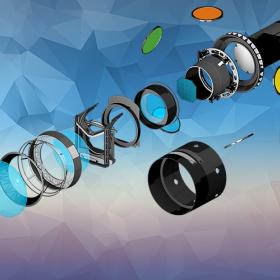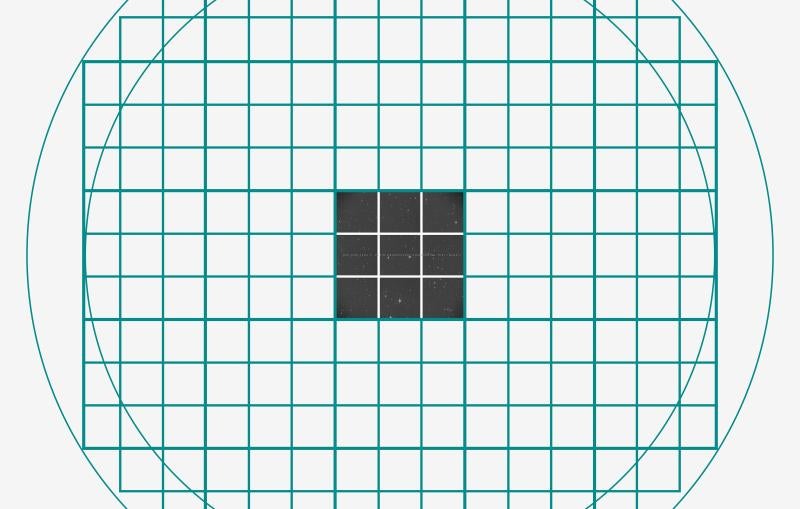Q&A with Regina Matter: Bringing people together to build the world’s largest digital camera
It takes a lot of meetings, travel logistics and even tracking down some parts to keep a large team collaborating on a project like the LSST Camera. That’s where administrator Regina Matter comes in.

With any major scientific project comes the need to bring researchers and staff together to collaborate – often from all over the world, often dozens of them or more. Somebody needs to arrange meetings, book flights, secure visas and simply make sure people have working email addresses.
For the Legacy Survey of Space and Time (LSST) Camera built at the Department of Energy's SLAC National Accelerator Laboratory, that someone is Regina Matter, the LSST Camera administrator. When SLAC scientists travel to Chile along with the camera later this year, it will have been Matter who made the arrangements to get them there and made sure they have a place to stay and the right paperwork to get where they need to go.
"Regina is the first person I turn to when I have no idea how or whom to contact to get something done," said Travis Lange, a staff engineer at SLAC and the deputy project manager and camera integration manager for the LSST Camera. "I appreciate how she can make complicated logistics seem effortless, even though I know they're not."
Aaron Roodman, a professor at SLAC and deputy director of the Vera C. Rubin Observatory, of which the LSST Camera is a central part, agreed. "I cannot count how many times my answer to questions concerning work on the LSST Camera is simply, 'ask Regina.' She is such an important part of the LSST Camera team, and we rely on Regina to keep so many elements of the work of the group on track that we’d be lost without her."
Here, Matter talks about some of her experiences and the satisfaction she gets from being part of a team that makes science happen.Ω
SLAC completes construction of the largest digital camera ever built for astronomy
Once set in place atop a telescope in Chile, the 3,200-megapixel LSST Camera will help researchers better understand dark matter, dark energy and other mysteries of our universe.

When did you first come to work for SLAC and for the LSST Camera?
I came to SLAC in 1994, so I've been here about 29 years. I first worked on the PEP-II project. I came to work for the LSST project around 2013, about 10 years ago.
What do you do for the project?
As the LSST Camera administrator, there are a lot of different hats I wear to support the camera team. One of them is travel – domestic and foreign travel for the camera team, for visitors coming here to SLAC, and for visitors traveling to the telescope in Chile so they can work on the summit there. I also support the LSST Camera team in Chile with travel, which gets pretty involved. For visitors who come to SLAC, I handle visa issues and getting their invite letters. That's the travel umbrella.
I also support meetings and reviews at SLAC for the camera team, another umbrella with a lot of logistics under it – support for meeting rooms, catering, AV, site access, hotels, arranging reimbursements, and even creating signage.
So, you're like the travel agent and event planner and other things as well.
Right. I also do the LSST and Rubin Observatory onboarding for new SLAC employees, getting them email accounts and whatever else they need, setting them up with offices and just kind of overall admin support.
You've been with this project for ten years – I imagine you must have some interesting stories! I heard that you once delivered a camera part to Travis Lange, the deputy project manager.
I forgot about that! Yes, there was a part that Travis needed for the camera, and there was a delay with the shipping company. So I tracked it, and it was unclear when the company was going to deliver it because they couldn't find it. I ended up going to their hub in the East Bay, got them to pull it off a truck and was able to grab it and deliver it to Travis's house so he could use it the next morning.
Are there any particularly memorable situations you've been in?
During COVID times it was extremely challenging for any kind of travel, but we still needed to move forward on the camera as best we could. At one point we needed to get our French team from IN2P3 here so they could finish up their part, and I got help from our miracle worker in the International Services Office here at SLAC, Victoria Schwerin. She went through many hoops, got an expedited support letter created by DOE, and made a contact at the embassy in Paris so that the researchers could get their visas in time. That was all because of Victoria. Not many people were able to travel at the time, and it had a huge impact for the camera, to keep it going.
Any other fond memories?
Whenever the camera reached a milestone, we would have these barbecue lunches behind the SLAC gym on the outside patio there. We would provide catered food, and the team would come and have a celebration. We would give out LSST swag to everybody, and someone from the project management would say a few words and thank everyone for this accomplishment. I think the team really appreciated that. It's a small thing, but it's those little things that matter.
Are you excited to have this project done soon?
This is a pretty cool thing that the camera team's created, the largest digital camera in the world, to be mounted on the telescope in Chile. I think everybody's very excited for it to get launched and continue the science.
I get the sense you like working with this team.
Yeah. It's the people that make it worthwhile. The camera team works extremely hard over long hours. They're extremely professional, they're knowledgeable and they're super nice to work with. I feel very grateful to have the opportunity just to be a part of the LSST Camera team. I really do. It's all about the people.
For questions or comments, contact the SLAC Office of Communications at communications@slac.stanford.edu.
LSST Camera: World’s largest camera for astronomy
About SLAC
SLAC National Accelerator Laboratory explores how the universe works at the biggest, smallest and fastest scales and invents powerful tools used by researchers around the globe. As world leaders in ultrafast science and bold explorers of the physics of the universe, we forge new ground in understanding our origins and building a healthier and more sustainable future. Our discovery and innovation help develop new materials and chemical processes and open unprecedented views of the cosmos and life’s most delicate machinery. Building on more than 60 years of visionary research, we help shape the future by advancing areas such as quantum technology, scientific computing and the development of next-generation accelerators.
SLAC is operated by Stanford University for the U.S. Department of Energy’s Office of Science. The Office of Science is the single largest supporter of basic research in the physical sciences in the United States and is working to address some of the most pressing challenges of our time.






